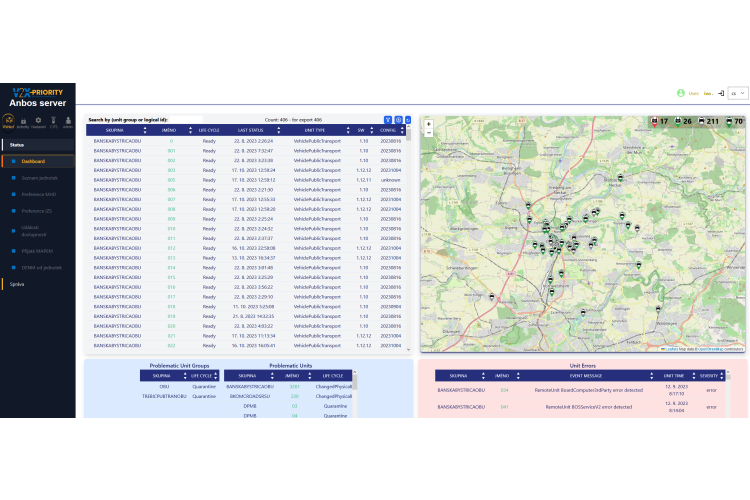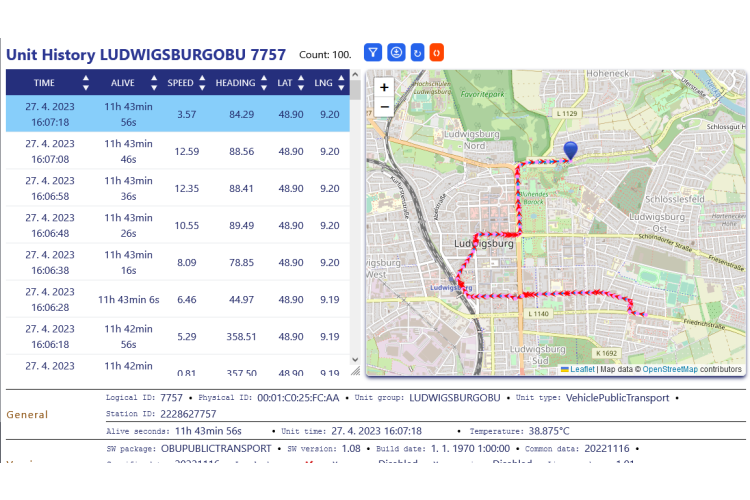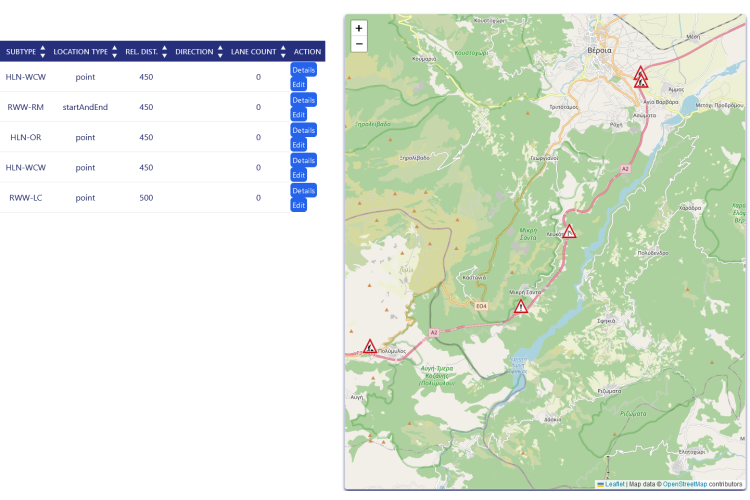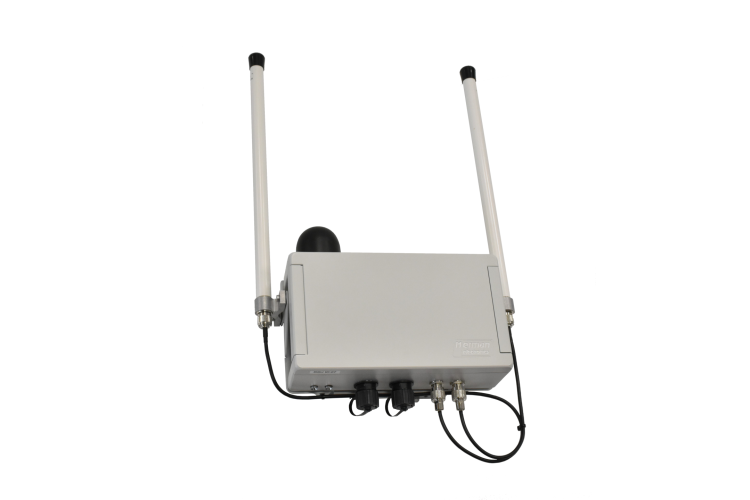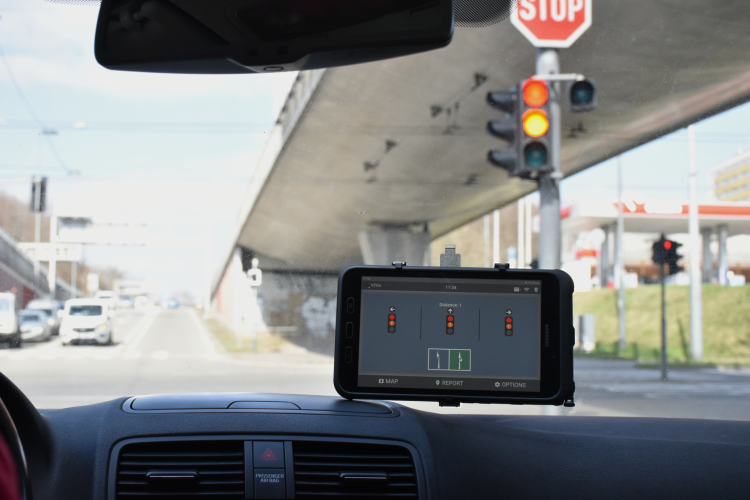C-ITS Back office Anbos
The Anbos software is a server-based system that provides the full functionality of the C-ITS Back Office. It takes care of the creation, signing and processing of C-ITS messages as well as the overall management of the connected C-ITS units. It can be installed at the customer's site or used as a cloud service.
Contact us
Anbos: The Central Control Server for C-ITS Units
In the world of Cooperative Intelligent Transport Systems (C-ITS), seamless control and management of the system is essential. Anbos takes center stage as the control and monitoring server that oversees the management of C-ITS units, including Roadside Units (RSUs) and On-Board Units (OBUs). This component allows for unit configuration, monitors their status and lifecycles, and unit updates. Moreover, Anbos serves as a hub for storing messages to be sent to C-ITS units and those received from them, thanks to its part called C-ITS Backend.
Anbos serves as the bridge between users and the C-ITS units. It features a user-friendly graphical interface and upholds a persistent storage system, making it the ideal interface for configuration, status monitoring, and management of C-ITS units.
On the other hand, the C-ITS Backend is the heart of the C-ITS mesasge handling. This real-time component plays a pivotal role in receiving, distributing, generating, verifying, and processing C-ITS messages. It is the component of the C-ITS BO that directly handles C-ITS messages, necessitating real-time capabilities. For added security, it can be linked to a Hardware Security Module (HSM) to sign and verify C-ITS messages. Messages are triggered in the form of C-ROADS use-cases, and then they are distributed to connected C-ITS units through the MQTT(s) protocol. The C-ITS Backend is also linked to the central BO-to-BO server, facilitating the exchange of C-ITS messages with other C-ITS BOs (e.g., between a city C-ITS BO and highway C-ITS BO). For its secure communication needs, it connects with a Public Key Infrastructure (PKI).
In the world of C-ITS, Anbos stands as the backbone, providing control, monitoring, and seamless data handling for C-ITS units. This centralized management system keeps the wheels of intelligent transport systems turning efficiently and securely.
Description of our flagship project in Hradec Králové, in which Anbos was a key component, is here.
Key functions of Anbos
Monitoring and updates
- Unit Authorization: All connected units are appropriately authorized to access and communicate within the C-ITS system.
- Unit Status: status of the connected C-ITS units, including unit health monitoring and logs from the units.
- Unit Status History: The system records and preserves the status history of units, both current and historical records, offering a comprehensive perspective.
- Logs of prioirity requests: each OBU and RSU reports generated and received priority request (SREM+R09) to Anbos, where these records are presented to the user,
- Various exports, such as reachability of units in the given period. Every status and statistics are exportable to CSV.
- C-ITS unit update: Anbos tracks the versions of individual packages in the units, and in the event of any discrepancies, notifies the unit of the availability of updated packages, ensuring the units remain up-to-date.
Unit configuration for OBU
- Basic vehicle properties: vehicle type, length, fuel, ...
- Services and warnings: which service should be active (DENM warnings, MAPEM processing)
- Configuration for special vehicle: public transport (connection to the board computer, public transport priority control), roadwork configuration (roadwork status detection etc.
- Configuration of public transport priority: configuration of passes of intersection for SREM control, based on list of public transport stops
Unit configuration for RSU
- Basic properties: location, operator ID etc.
- Services and warnings: sending of MAPEM and SPATEM, automatically triggered warnings,
- Configuration of priority at intersections: priority zone definition, connection to traffic light controller
- MAPEM configuration: detailed configuration of MAPEM message, including use of detailed GIS maps. Complex configuration of lane properties, including signal group merging, or of properties of nodes, including node links.
General configuration:
- Networking properties: IP addresses, Wi-Fi access points, APN for mobile internet etc., NTP servers etc.
- Security settings: distribution center address, SSP configuration.
C-ITS message handling
- Generation of C-ITS messages: Anbos can generate, update and sign C-ITS messages and distribute these signed message to RSUs and OBUs
- Reception of C-ITS messages: each warning C-ITS message, rereceived received by units in the field, can be distributed to Anbos. Then it is converted to a traffic event.
- C-ITS message forwarding: Anbos supports hybrid communication by forwarding message between C-ITS units, e.g., a signed priority request can go from an OBU to an RSU using forwarding features of Anbos.

